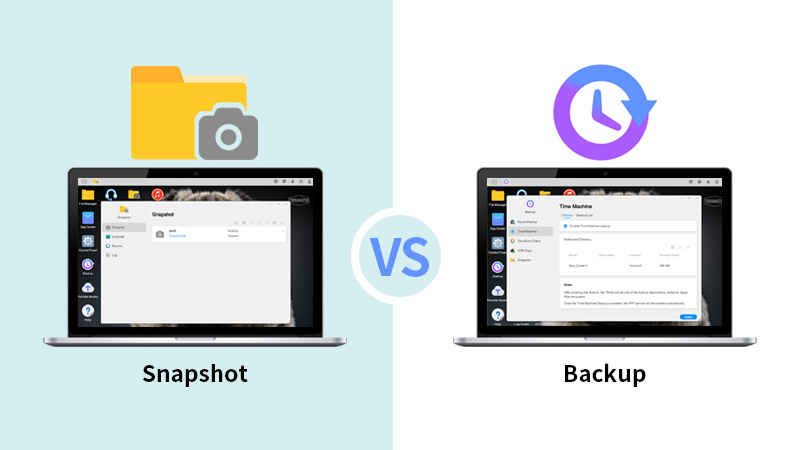/ What is Snapshot? How is it different from Backup?
Snapshot, that is, snapshot technology, is widely used in backup.
Snapshot is actually a reference mark or pointer to the data stored in the storage device, which is the state of the data at a certain moment. The core of its working principle is to establish a pointer list, indicating the address of the read data, providing an image of the instantaneous data, and copying when the data changes.
It is roughly divided into two types, one is called a copy-on-write snapshot, which is usually called a pointer-type snapshot, and VSS belongs to this type. The other is called split-mirror snapshots, often called mirror-type snapshots.
Pointer-type snapshot takes up less space and have less impact on system performance. However, if there is no backup and the original data disk is damaged, the data cannot be recovered. Split-mirror snapshot is actually full images of the data at that time, which will cause a certain load on system performance. Even if the original data is damaged, it will not have much impact, but will take up space of the same capacity.
The concept of backup is broader, and its essence is a copy, which replicates data according to certain strategies and methods, such as full backup, incremental backup, differential backup, etc., and stores it in a specific environment to avoid data loss accidents.
What is the difference between snapshot and backup?
1. Data Security
If the original data is damaged (for example, the physical medium is damaged, or the locked data is overwritten by bypassing the management mechanism of the layer where the snapshot is located), the snapshot cannot restore the correct data, but the backup can.
2. Different speeds
Snapshot is much faster than backups. In order to avoid various problems caused by backup time (such as IO usage, data consistency, etc.), much backup software generate snapshots first, and then read the underlying data according to the corresponding relationship recorded in the snapshots to generate backups.
3. Take up different space
Backup will take up double storage space, while snapshot takes up storage space based on the number of snapshot and data changes. In extreme cases, snapshots may occupy less than 1% of the storage space, or may occupy dozens of times the storage space. (However, if you do the same number of snapshot and incremental backup for the same data at the same time, backup will still take up much more storage space than snapshot.)
Comparing the differences between snapshot and backup, you can see that snapshot is a technology, while backups are a process. Snapshot is the state at a certain point in time, and backup is the copy of data.
Snapshot are not equivalent to backups. For temporary protection of data, you can use snapshot, and for long-term protection, you need to use backup. Snapshot and backup have their own application scenarios. Only by using appropriate solutions in appropriate scenarios can data be protected to the greatest extent.


